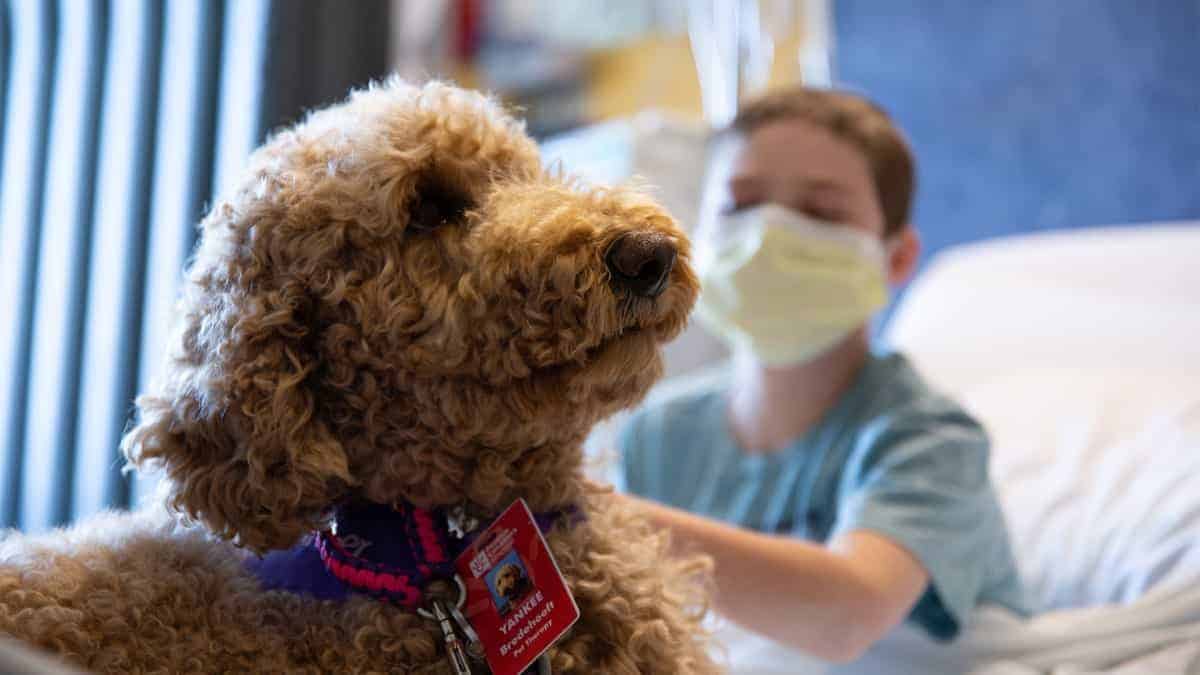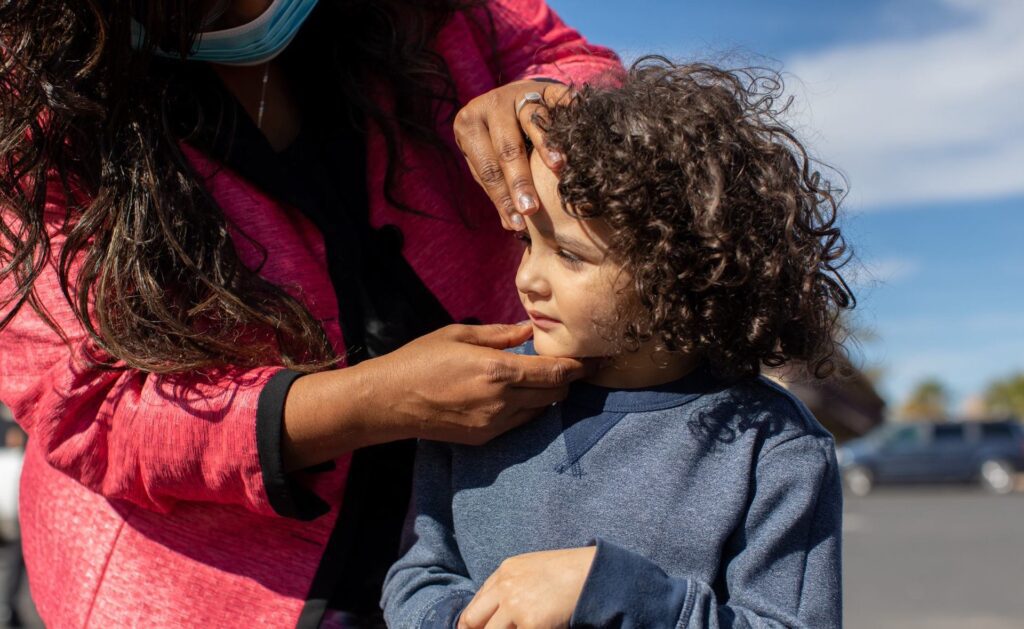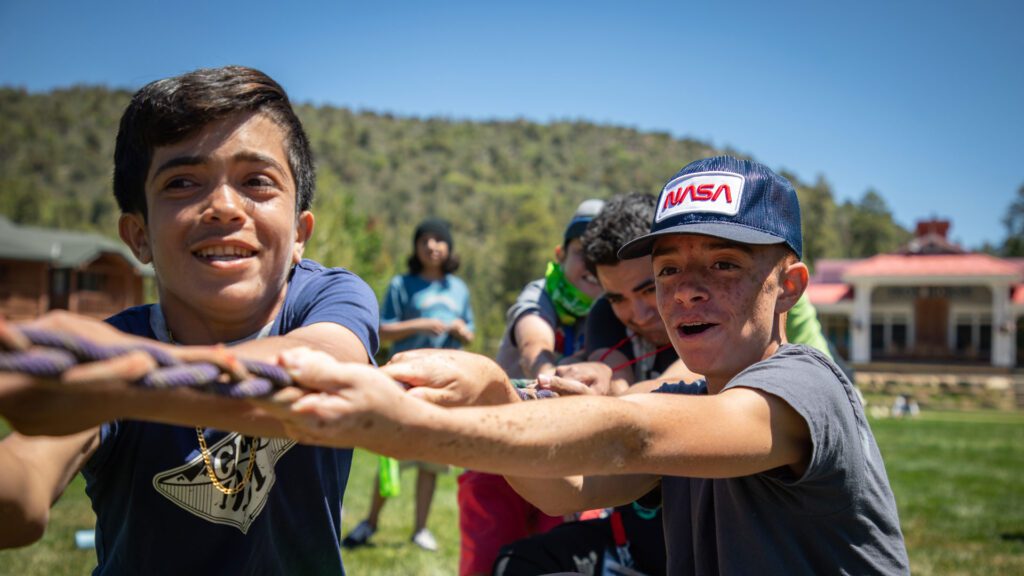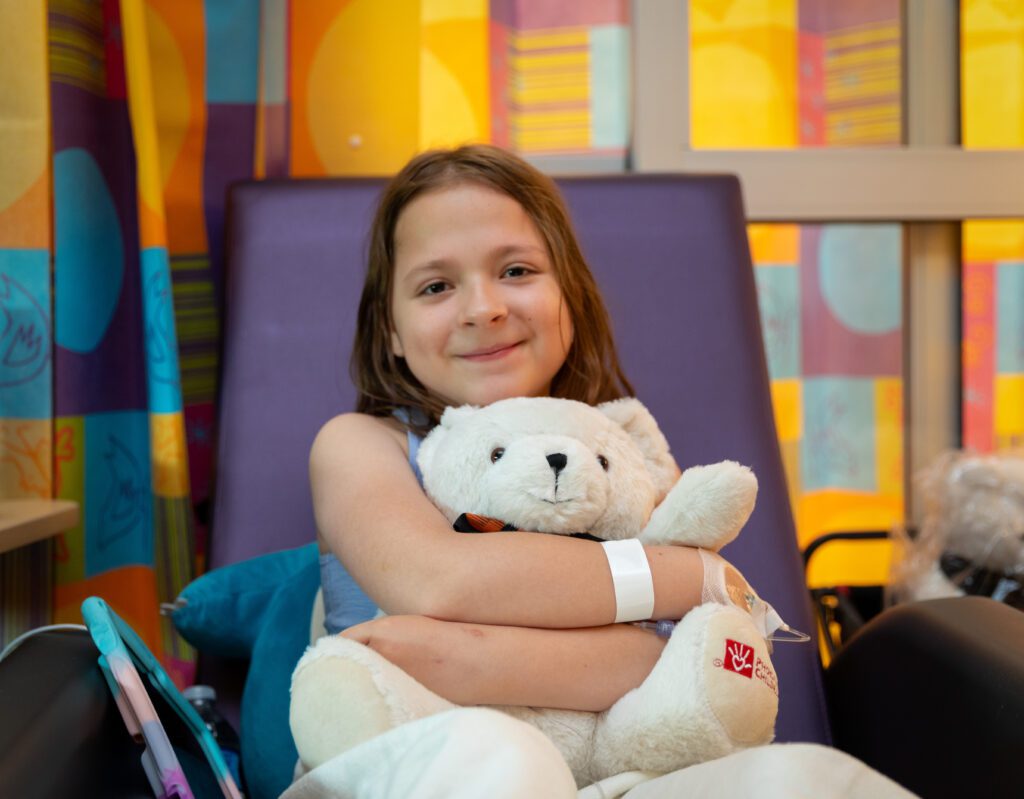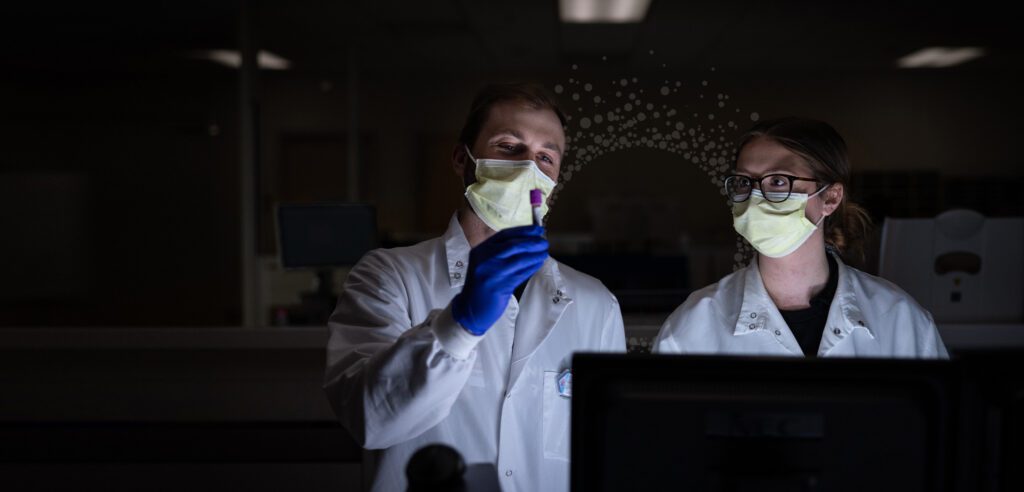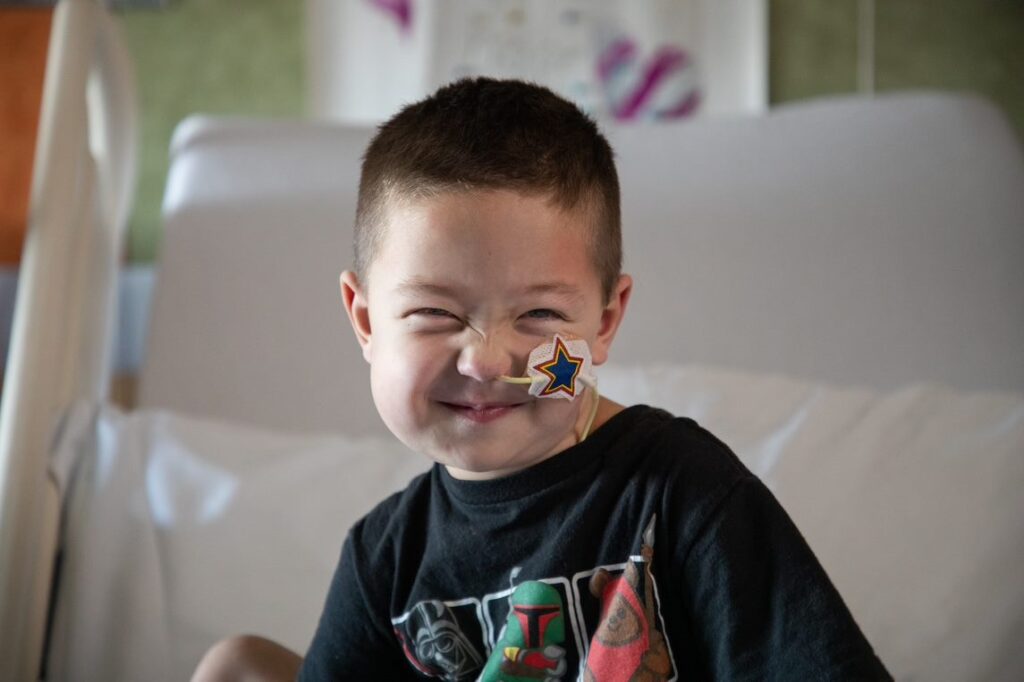Mary Lou Jennings has witnessed the healing power of animals many times in the nearly two decades since Phoenix Children’s started its animal-assisted therapy program. One story in particular stands out in her memory.
“We had a patient who was not doing so well after brain surgery,” Jennings says. “She was not coming out of a coma state following surgery, and her family and staff were really very concerned. So we brought a therapy dog in to visit with her. We got the dog up on her bed, and the girl’s mom helped move her hand over the dog’s fur. And we saw brainwave activity on the monitors, and we saw the girl’s eyes flutter. She actually had a very physical response where her eyes opened and she moved. Of course, everybody in the room, myself included, just lost it. There were lots of tears. And that patient continued to recover. She did great.”
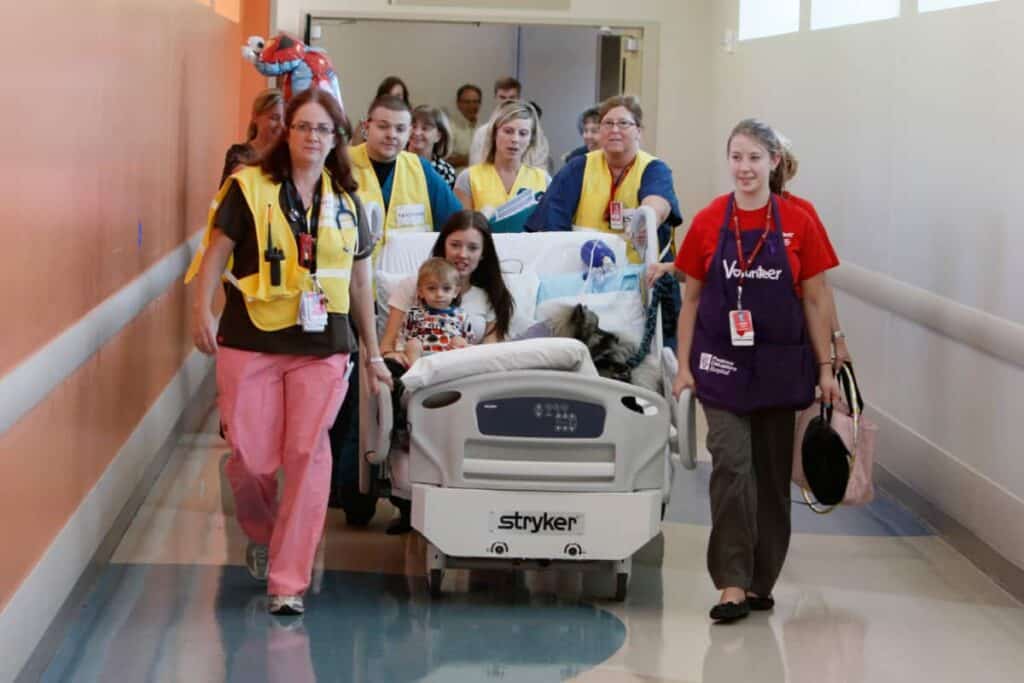
“We had a patient who was not doing so well after brain surgery. We got the therapy dog up on her bed—we saw brainwave activity on the monitors, and we saw the girl’s eyes flutter. Her eyes opened and she moved. Of course, everybody in the room just lost it. There were lots of tears. And that patient continued to recover. She did great.”
Mary Lou Jennings
As the Animal-Assisted Therapy Program director, Jennings is full of stories like that one. But there is more than just anecdotal evidence about the effects of therapy animals on patients. Research shows animal-assisted therapy benefits patients in a multitude of ways.
Therapy dog benefits
Because there wasn’t a great deal of research on animal-assisted therapy, and even less that was specific to children, Phoenix Children’s conducted its own research on the topic. Researchers found that patients had significantly lower levels of the stress hormone cortisol after visiting with a therapy dog. And that translated into improved blood circulation, digestive operation and respiratory function.
But animal-assisted therapy is useful in other ways, too. Therapy dogs can entice patients to get up and move around, an important part of recovery.
“We see patients who don’t want to get out of bed because of pain be motivated to get up or even just sit at the side of the bed when they see a dog,” Jennings says.
The animals also play an important role in doctor-patient relationships.
“Physicians will often ask us to visit a patient before they see them, because it gives them an opportunity to have something positive to talk to patients about,” she says. “It helps build rapport and gets them talking.”
And, of course, interacting with a therapy dog is usually a welcome distraction from being in the hospital.
“At the very least, it gives them a 10-minute vacation from the hospital environment and allows them to think about other things,” Jennings says. “It helps them feel the same things that they feel when they’re at home with their dog and removes some of the anxiety and other feelings they may associate with the hospital room.”
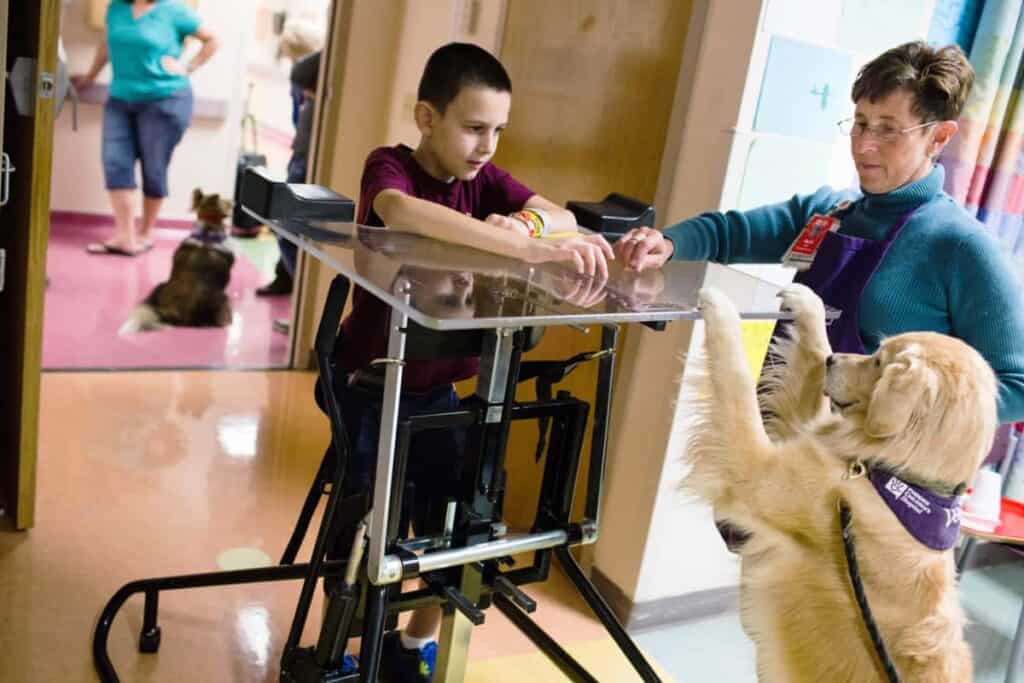
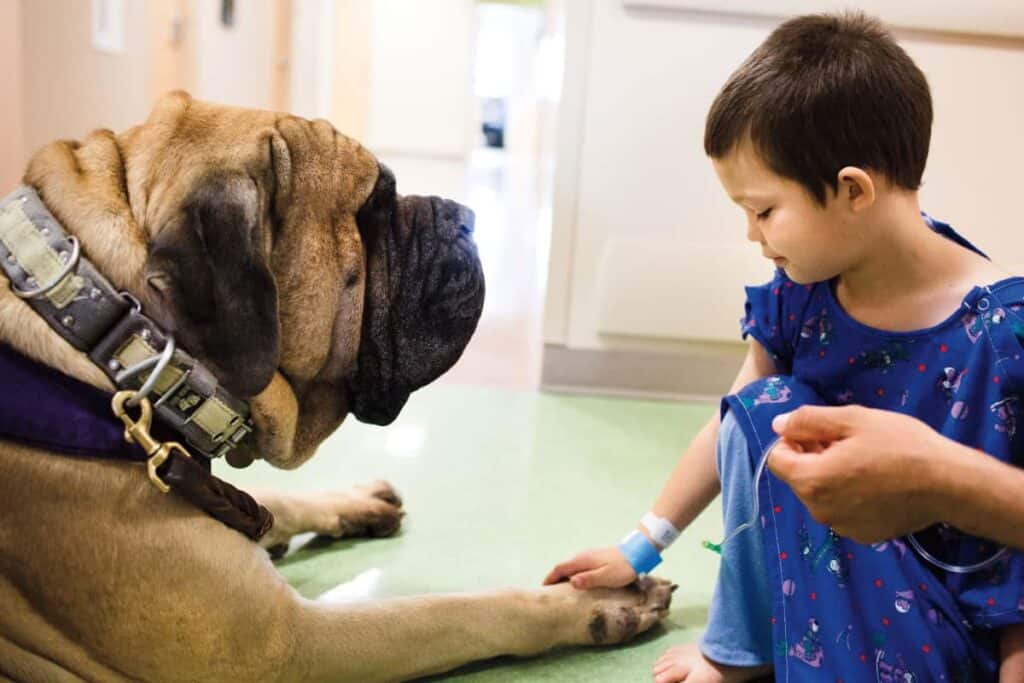
How the program works
Phoenix Children’s Animal-Assisted Therapy Program currently has 36 volunteer therapy animals—34 dogs and two cats. All are registered with Pet Partners or similar professional organizations.
When hospital staff recognize an opportunity for a patient to benefit from animal-assisted therapy, they enter a request just as they would request an X-ray or lab test. Jennings then matches up the best therapy animal for the job and sends the team—the therapy animal, handler and team escort—to the patient’s room with goals for the visit. Most patients light up when they see the animal come in. Others are apprehensive, particularly if they are hurting.
“We have really well-trained therapy dogs who know that they’re going to be hanging out in a calm way,” Jennings says. “So we can do very gentle interactions where the dog just puts their head on the side of the bed, and that allows the patient to develop trust with the dog before they eventually invite them up onto their bed and have a good time with them.”
Expanding reach
In 2021, the program added two full-time facility dogs to its roster. Each facility dog works 40 hours a week alongside a specially trained staff member. One team is dedicated exclusively to Child Life, the other to Rehabilitation Services. Being available every day provides patients with much-needed consistency.
“Our full-time facility dog teams are here almost every day,” Jennings says. “That’s important for being able to develop a relationship with a patient who really needs that as part of their recovery.”
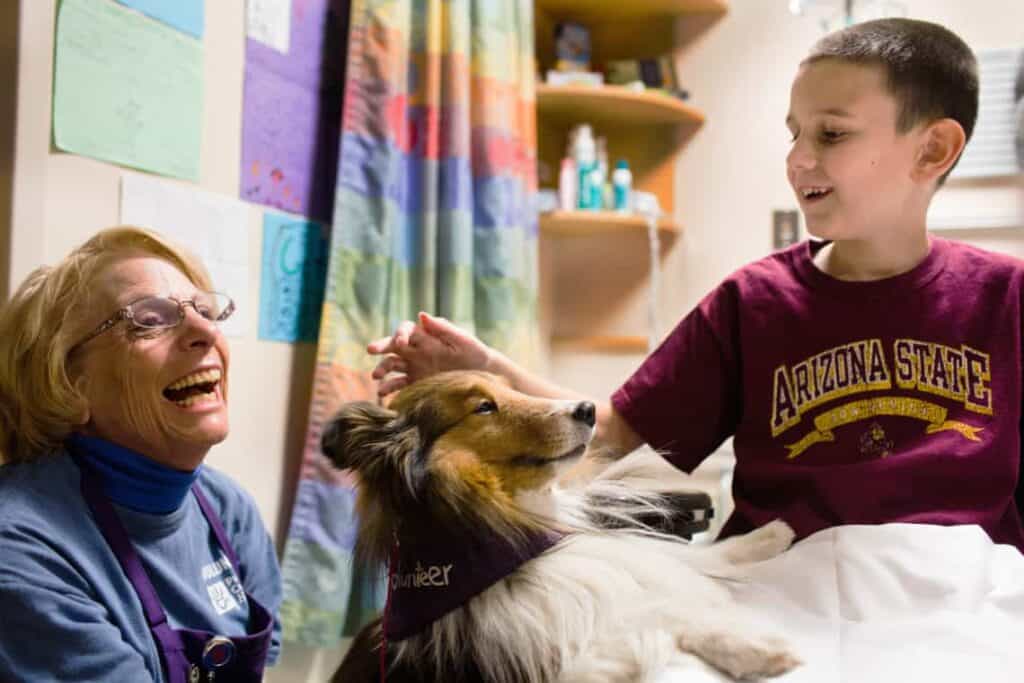
The importance of philanthropic support
Phoenix Children’s Animal-Assisted Therapy Program is funded entirely by donations. In addition to the cost of the two full-time, specially trained facility dogs, the program is financially responsible for their care and feeding, pet insurance, vet visits and shots, grooming and other expenses related to materials and training.
“Without our donors, we wouldn’t be able to have our program, let alone expand it,” Jennings says. “We’re so, so grateful for them.”
One of Phoenix Children's many ways to give, your generous donation will support the expansion of the Animal-Assisted Therapy Program.
If you have a story about how your life has been touched by Phoenix Children’s, we want to hear from you.

